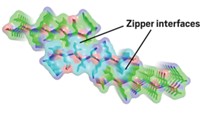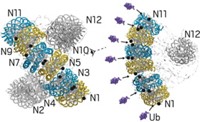Advertisement
Grab your lab coat. Let's get started
Welcome!
Welcome!
Create an account below to get 6 C&EN articles per month, receive newsletters and more - all free.
It seems this is your first time logging in online. Please enter the following information to continue.
As an ACS member you automatically get access to this site. All we need is few more details to create your reading experience.
Not you? Sign in with a different account.
Not you? Sign in with a different account.
ERROR 1
ERROR 1
ERROR 2
ERROR 2
ERROR 2
ERROR 2
ERROR 2
Password and Confirm password must match.
If you have an ACS member number, please enter it here so we can link this account to your membership. (optional)
ERROR 2
ACS values your privacy. By submitting your information, you are gaining access to C&EN and subscribing to our weekly newsletter. We use the information you provide to make your reading experience better, and we will never sell your data to third party members.
Biological Chemistry
A Detailed Look At Tau
Using a single-molecule fluorescence technique, scientists map both the native and preaggregated structure of the Alzheimer’s protein
by Lauren K. Wolf
October 8, 2012
| A version of this story appeared in
Volume 90, Issue 41
Researchers at Yale University have obtained the clearest picture to date of tau protein’s solution-phase structure (J. Am. Chem. Soc., DOI: 10.1021/ja305206m). Tau, a macromolecule that aggregates and forms fibrils inside the neurons of Alzheimer’s patients, has been structurally investigated before. But now, using single-molecule fluorescence resonance energy transfer (FRET), Shana Elbaum-Garfinkle and Elizabeth Rhoades have made measurements on individual tau proteins rather than on large ensembles of them. Not only has the approach yielded a more detailed model of the native tau structure, says Jeff Kuret, a biochemist at Ohio State University, it has also provided “new insight into the conformational changes that likely precede tau aggregation.” That’s because Elbaum-Garfinkle and Rhoades also mapped tau’s structure when the protein was bound to heparin, a polyanion known to induce formation of tau aggregates. The researchers observed that in the presence of heparin, tau’s end segments sever long-range contact with one another and that one of the protein’s inner segments, called the microtubule-binding region, compresses. Designing drugs to stabilize tau and prevent these structural changes might be one disease-fighting strategy, the researchers suggest.




Join the conversation
Contact the reporter
Submit a Letter to the Editor for publication
Engage with us on Twitter